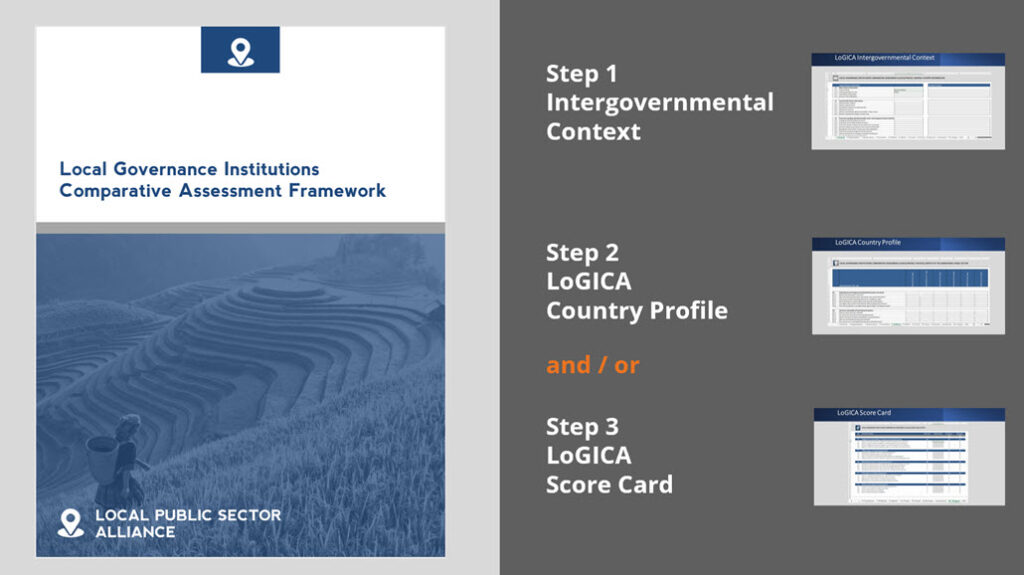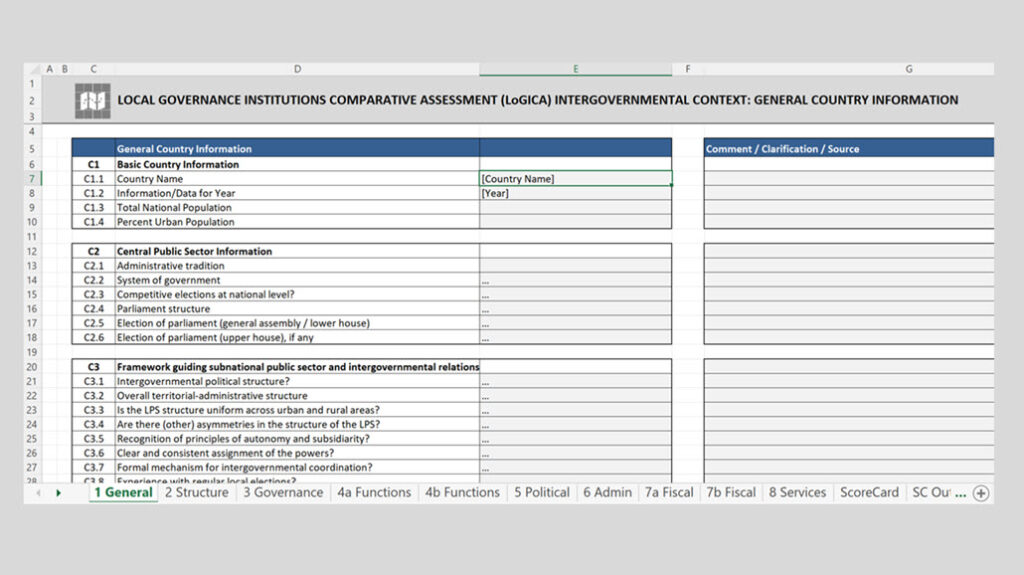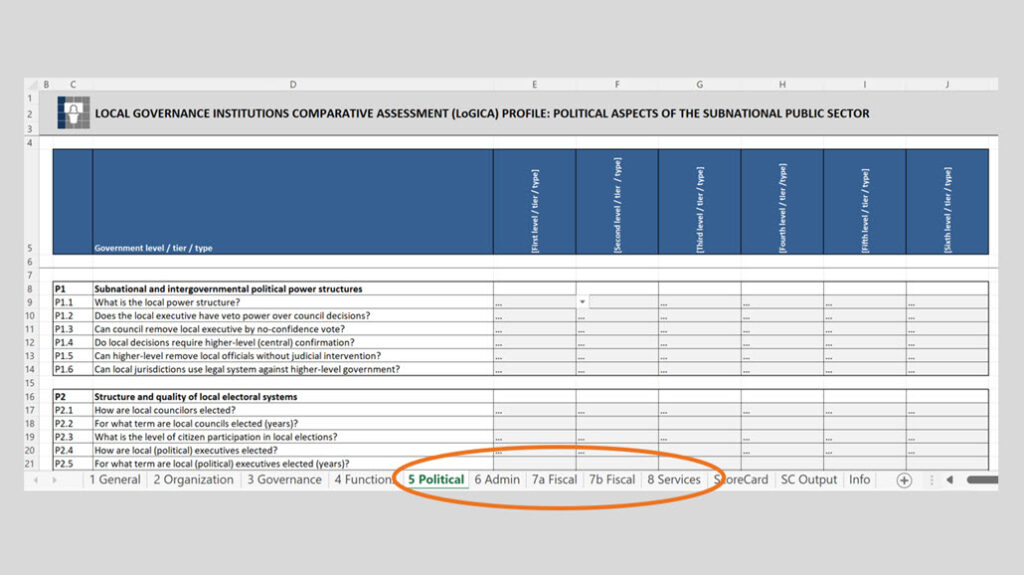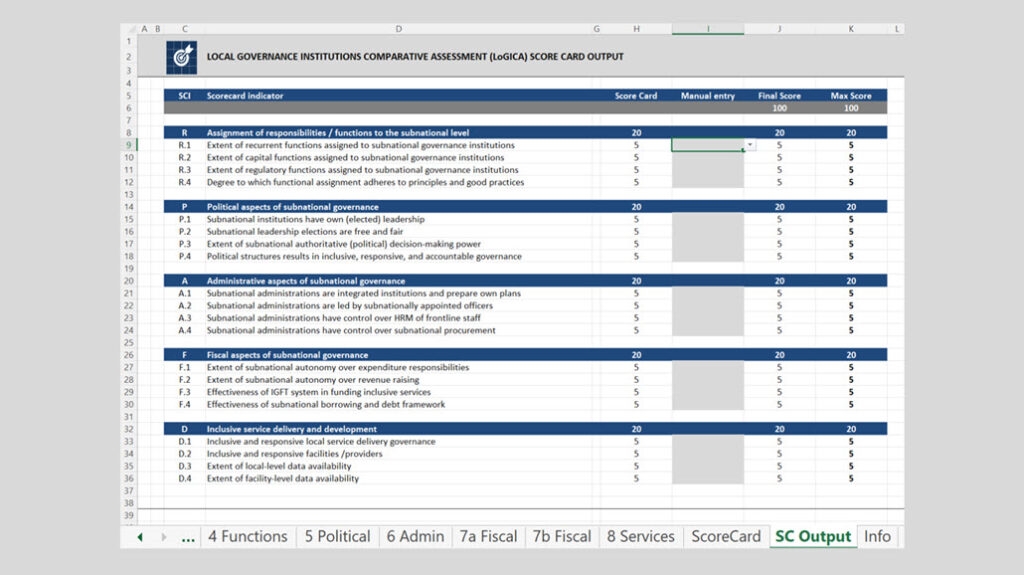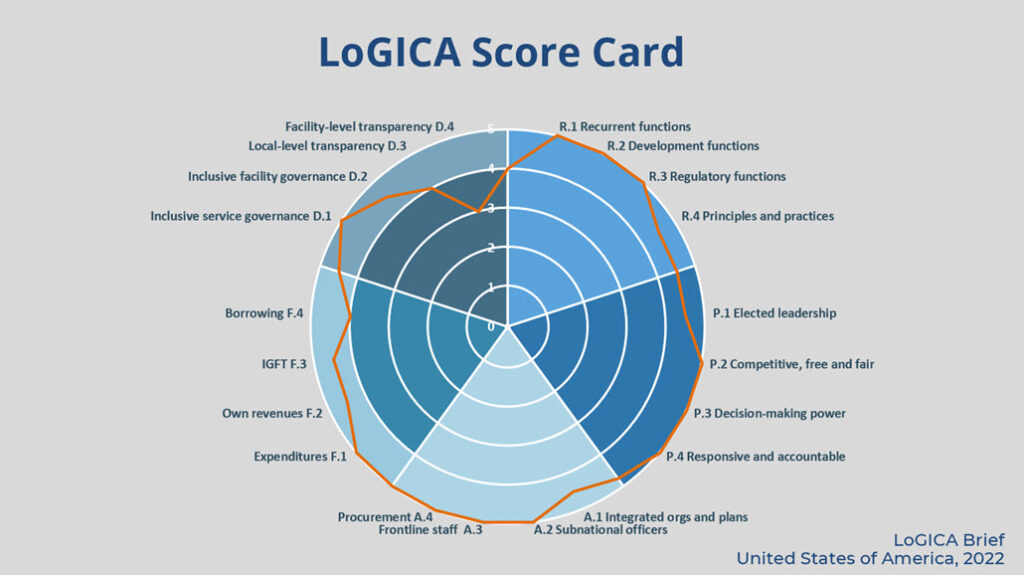General overview of the framework
The Local Governance Institutions Comparative Assessment (LoGICA) Framework is an Excel-based assessment tool to analyze the multilevel governance structure of a country, along with the subnational institutions and intergovernmental systems that contribute to inclusive governance, effective public service delivery and sustainable localized development.
A revision of the framework conducted in 2022 ensures that the LoGICA framework is up-to-date and provides a suitable framework for informing country-level policy dialogues on decentralization, multilevel governance and intergovernmental relations. The revision also ensures that selected indicators can feed into a global, comparative data set on the state of multilevel governance and subnational governance institutions. The LoGICA Framework now consists of three parts:
The LoGICA Intergovernmental Context provides an overview of a country’s background, territorial-administrative organization, subnational governance arrangements, and functional assignments.
The LoGICA Country Profile captures detailed information about multilevel governance arrangements at different subnational governance levels/tiers/types in a country.
The LoGICA Score Card offers a “lighter touch” assessment and allows for a more quantitative assessment of multilevel governance systems in a way that facilitates comparisons across countries.
The LoGICA Intergovernmental Context / Intergovernmental Profile
The Intergovernmental Context / Profile consists of four separate segments or worksheets, capturing different aspects of the country’s multilevel governance structure and arrangements:
General country information. The first worksheet of the LoGICA Intergovernmental Context asks questions about the general country context.
![]() Watch instruction video (4:41)
Watch instruction video (4:41)
Territorial organization and administrative structure. Next, the LoGICA Framework captures information about the country’s territorial-organizational structure, asking details about the number of levels or tiers of governance or administration in a country, and the number of jurisdictions at each level or tier for (up to) eight main levels, tiers, or types of subnational jurisdictions.
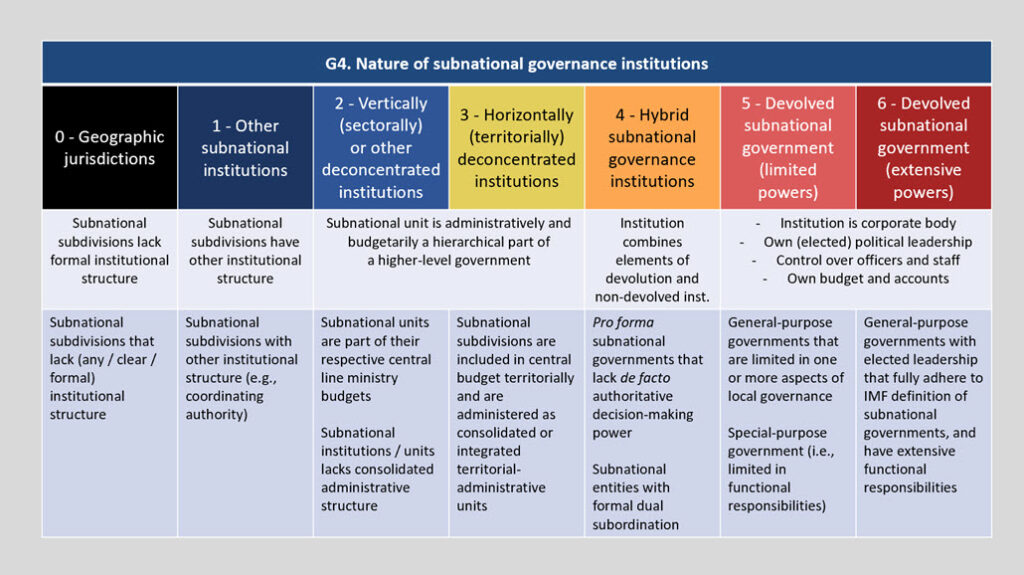
![]() Watch instruction video (6:48)
Watch instruction video (6:48)
Subnational governance. Third, the subnational governance profile captures the main institutional and governance features of regional and local entities by asking questions about the legal, institutional governance, and budgetary nature of subnational entities. This information helps to determine whether jurisdictions at each level or tier are devolved local governments, deconcentrated local administrative units, or any other type of local body. Use our online decision-tree questionnaire (using Google Forms) to determine a LoGICA Subnational Institutional Type.
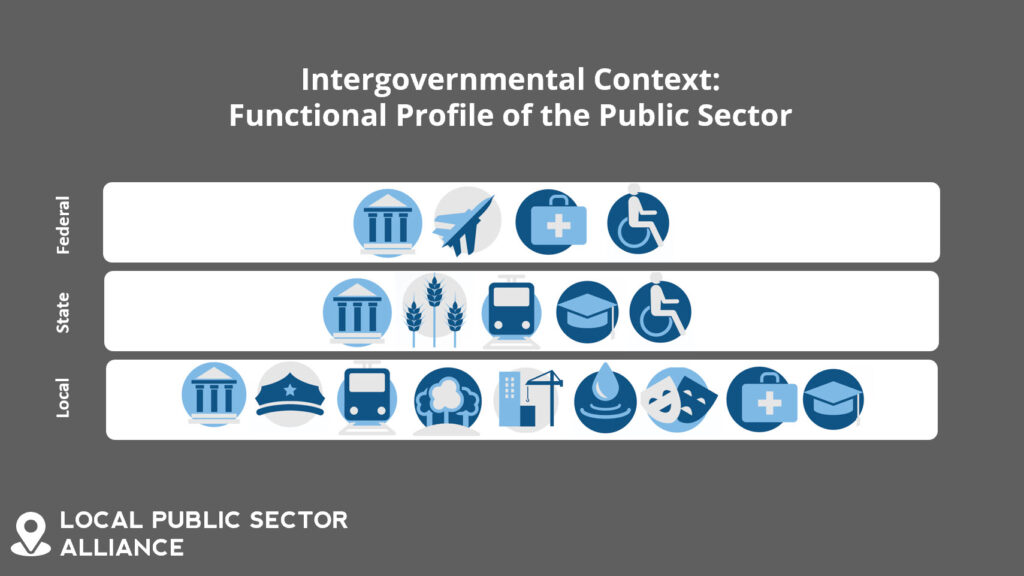
![]() Watch instruction video (4:52)
Watch instruction video (4:52)
Functions and public service delivery responsibilities. Fourth, the Functions worksheets of the LOGICA Profile (4a and 4b) capture basic information about the assignment of responsibility and authority for key service delivery functions, as well as the regulatory authority of subnational entities and their authority to regulate and plan physical space.
The LoGICA Country Profile
The LoGICA Country Profile consists of four additional segments or worksheets, capturing different aspects of the country’s multilevel governance arrangements. The LoGICA Country Profile captures detailed information about the (5) political, (6) administrative, (7) fiscal and (8) service delivery arrangements for each governance level or administrative tier in a country.
The LoGICA Score Card
The LoGICA Score Card provides a relatively light touch comparative assessment of the five main dimensions of a multilevel governance system, including (i) functional responsibilities; (ii) political; (iii) administrative; and (iv) fiscal aspects of subnational governance, as well as (e) inclusive and responsive local service delivery and development. For every institutional dimension, four questions or score card indicators (SCI) are presented; each SCI should be assigned a score ranging from zero to five points.
While higher scores suggest a greater degree of decentralization or subnational autonomy across different dimensions of the public sector, higher scores do not conclusively indicate a more inclusive or effective multilevel governance system. Instead, the inclusiveness, responsiveness and effectiveness of the subnational public sector depends on the granular balance of empowerment, capacity and accountability within and between different dimensions of public sector governance.

